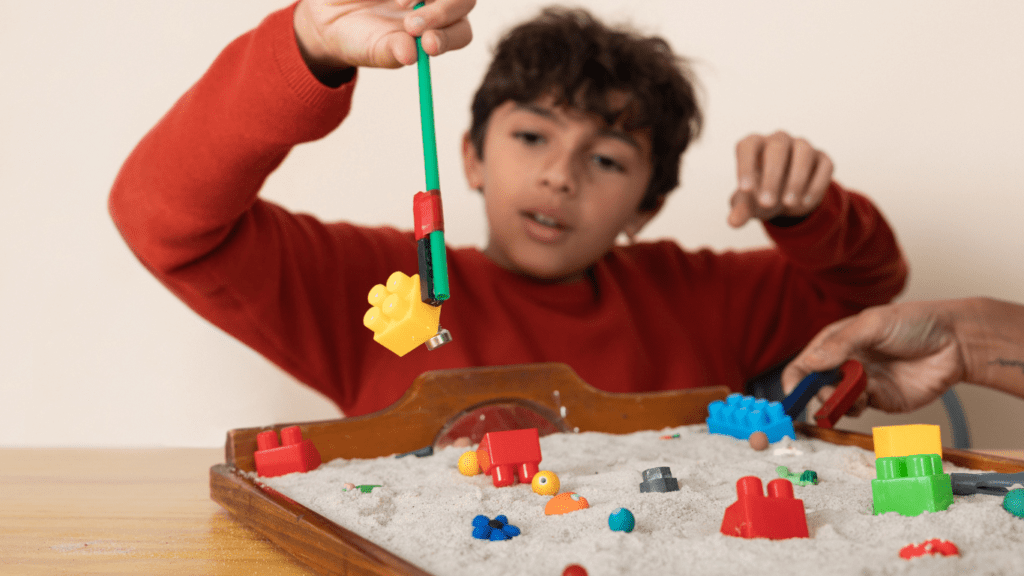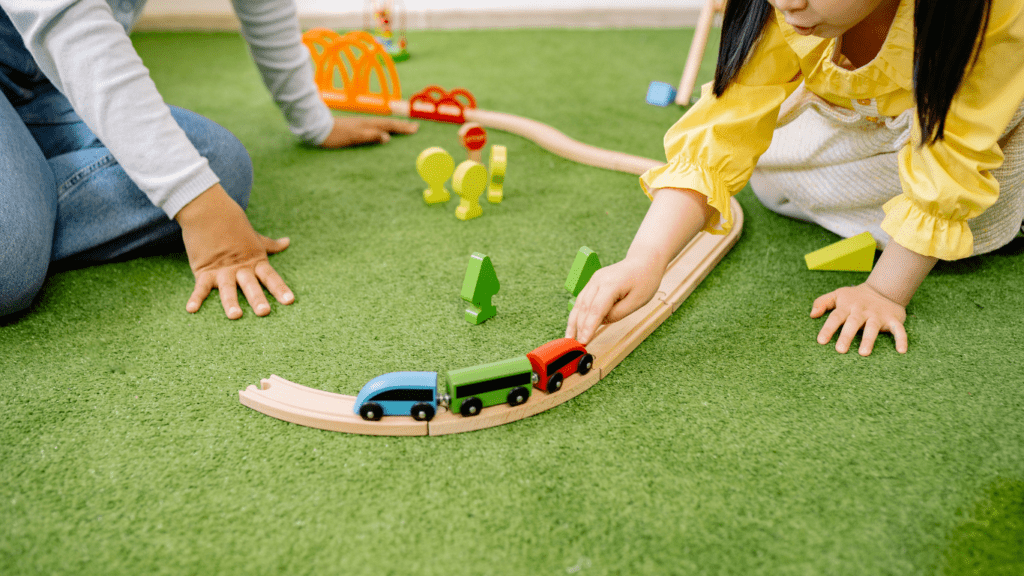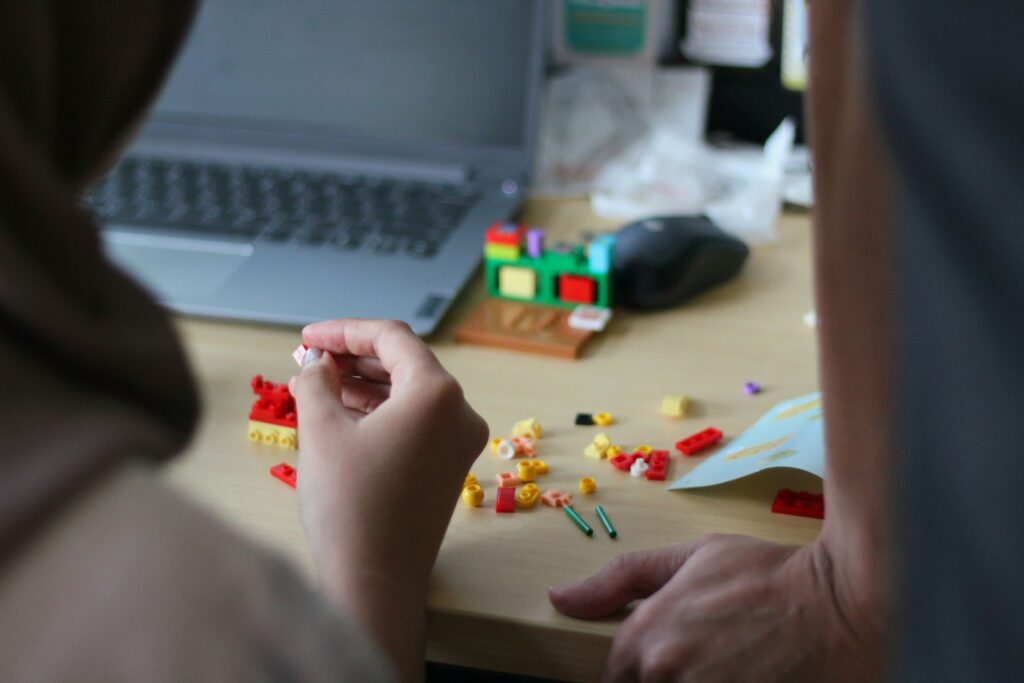Understanding Learning Through Play
Learning through play combines enjoyment and education, creating a powerful tool for childhood development.
The Essentials of Play in Learning
Play engages children’s brains, fostering creativity, critical thinking, and problem-solving skills. Research shows that play-based learning enhances cognitive and social development.
Through play, children learn to cooperate, negotiate, and develop empathy. For example, building a Lego castle requires teamwork, imagination, and tactical planning, which nurtures these vital skills.
Play encourages children to explore their environment, leading to a deeper understanding of the world around them.
How Lego Enhances Learning Through Play
Lego games introduce concepts of math, science, and engineering. Building structures with Lego bricks teaches basic math skills like counting, symmetry, and geometry.
Science principles, such as gravity and balance, become clear as children experiment with their creations. Engineering skills develop as kids design, construct, and modify their projects to solve problems.
For instance, creating a Lego vehicle that moves involves trial and error, refining designs, and understanding mechanical functions. This hands-on approach makes abstract concepts tangible and accessible for young learners.
Educational Benefits of Lego Games
Lego games offer notable educational advantages, promoting cognitive and creative growth in children. These benefits, backed by research, make Lego an exceptional tool for learning.
Cognitive Development Boosted by Lego
Lego games significantly enhance cognitive development. When children engage with Lego, they practice spatial awareness. This spatial reasoning improves as kids visualize how pieces fit together.
They also develop fine motor skills by manipulating small bricks. These actions strengthen their hand-eye coordination.
Playing with Lego promotes problem-solving skills. Kids often face challenges during construction, needing them to think critically and devise solutions.
This process encourages logical thinking. Studies, including those published in the “Journal of Early Childhood Research,” show a direct link between Lego play and problem-solving abilities.
Fostering Creativity and Innovation
Lego fosters creativity and innovation. When kids build unique creations, they express individuality. This imaginative play develops their creative thinking. Constructing new designs pushes them to think outside the box.
Lego sets, like the Architecture series, introduce real-world design principles. Children learn about structural integrity and modern engineering.
By experimenting with different configurations, they innovate solutions. This practical learning experience nurtures inventive thinking.
Lego in Different Educational Settings

Lego games offer diverse educational benefits across various environments. Whether in classrooms or at home, Lego bricks enhance learning experiences.
Lego in Classrooms
Teachers frequently incorporate Lego sets into lesson plans to boost engagement and facilitate learning. Classic bricks help students grasp complex subjects like math and physics by making abstract concepts concrete.
For instance, using Lego to demonstrate fractions, geometry, and simple machines makes lessons more interactive and memorable. Robotics kits introduce students to coding, fostering logical thinking and problem-solving skills.
Alongside academic lessons, classroom Lego activities encourage teamwork and communication as students work together on projects, sharing ideas and solving challenges.
Lego at Home: A Family Learning Tool
Families often use Lego sets to foster collaborative learning and strengthen bonds at home. Parents can integrate educational activities into playtime by building structures to explore principles of architecture and engineering.
For example, constructing a bridge with Lego pieces allows children to understand balance, load distribution, and design innovation.
Storytelling with Lego minifigures enhances language and creative skills, encouraging children to develop narratives and character dialogues. Additionally, engaging in Lego activities supports fine motor skill development, patience, and perseverance.
Lego Games and Child Development
Lego games significantly contribute to child development by promoting various essential skills. These activities serve as powerful tools for both social and cognitive growth.
Building Social Skills Through Collaborative Play
Engaging in Lego games encourages kids to work together. They learn valuable social skills through shared tasks, including:
- communication
- cooperation
- conflict resolution
For instance, children negotiate roles and responsibilities when building a complex structure, enhancing their ability to work in a team. By sharing resources and ideas, they develop empathy and understanding.
Problem-Solving and Critical Thinking Enhancement
Lego activities challenge children to think critically and solve problems. They encounter and overcome obstacles by planning, testing, and modifying their constructions.
For example, figuring out how to build a bridge requires understanding balance and stability. These tasks enhance critical thinking by requiring children to analyze situations and troubleshoot issues, promoting independent thinking and creative solutions.
Incorporating Lego into Educational Curricula
Incorporating Lego sets into educational curricula benefits both students and educators. These benefits span various subjects and foster essential skills in an engaging manner.
Practical Tips for Educators and Parents
- Identify Educational Goals: Clearly define educational objectives for integrating Lego activities into lessons. For example, use specific Lego sets for math problems or historical recreations.
- Start Simple: Begin with basic projects to build confidence. Introduce more complexity gradually to students.
- Integrate Subjects: Connect Lego activities to subjects like science, technology, engineering, art, and mathematics (STEAM). Use Lego bricks for constructing models of cells in biology, for instance.
- Encourage Teamwork: Promote group projects to improve collaboration skills. Assign roles and ensure each student participates.
- Monitor Progress: Regularly assess students’ progress through observations and quizzes. Adjust the activities based on performance and engagement levels.
- Provide Resources: Supply necessary Lego kits and accessories for diverse projects. Include manuals or guides to facilitate learning and exploration.
Case Studies: Success Stories in Schools
- Robotics Programs: A school in California integrated Lego Mindstorms into its robotics curriculum. Students designed and programmed robots, improving their coding and engineering skills.
- Math Lab Initiative: A middle school in New York used Lego bricks to explain fractions and geometry. Hands-on activities helped students better understand mathematical concepts.
- History Lessons: In a Texas elementary school, students recreated historical events using Lego sets. This approach made history interactive and memorable.
- Special Needs Education: A school in Florida incorporated Lego therapy for children with autism. The activities enhanced social interaction and communication skills among students.
The adaptability of Lego activities has proven successful in diverse educational settings.

 is an experienced contributor at Play Briks Construction, where he specializes in exploring the educational potential of construction toys in early childhood development. His work emphasizes the importance of hands-on play in fostering creativity, problem-solving skills, and spatial awareness among children. Patrick is dedicated to providing parents and educators with practical insights and strategies for integrating construction play into learning environments. He also focuses on the latest trends and innovations in the toy industry, ensuring that his audience stays informed and engaged.
is an experienced contributor at Play Briks Construction, where he specializes in exploring the educational potential of construction toys in early childhood development. His work emphasizes the importance of hands-on play in fostering creativity, problem-solving skills, and spatial awareness among children. Patrick is dedicated to providing parents and educators with practical insights and strategies for integrating construction play into learning environments. He also focuses on the latest trends and innovations in the toy industry, ensuring that his audience stays informed and engaged.
